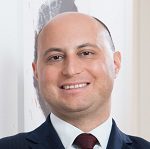On July 9, 2020, the Court of Justice (the “Court”) ruled on supplementary protection certificates (“SPCs”) in case C-673/18. The question submitted to the Court concerned the interpretation of Article 3(d) of Regulation EC 469/2009[1]. In particular, the meaning of “first authorization to place the product on the market as a medicinal product”.
In this case, the pharmaceutical laboratory Santen brought an action before the Court of Appeal of Paris against the decision taken by the Director-General of the French National Institute for Industrial Property (Institut National de la Propriété Industrielle – “INPI”) to reject Santen’s SPC application for a product called “Ciclosporin for use in the treatment of keratitis”. Santen’s SPC application was based on a European patent filed on October 10, 2005 (the “Basic Patent”) and the marketing authorization was granted by the European Medicines Agency on March 19, 2015 (the “MA”).
The Director-General of INPI rejected such application for the SPC on the grounds that the MA was not the first marketing authorisation for the purpose of Article 3(d) of Regulation EC 469/2009, since a marketing authorisation had already been granted on December 23, 1983 for a medicinal product called “Sandimmun”, based on ciclosporin as active ingredient. The Court of Appeal of Paris submitted to the Court a preliminary ruling concerning the interpretation of Article 3(d) of Regulation EC 469/2009.
Firstly, the Court analyzed the concept of “product” for the application of Regulation EC 469/2009 and concluded that “product” means “the active ingredient or combination of active ingredients of a medicinal product, without it being necessary to limit its scope only to one of the therapeutic applications to which such an active ingredient or combination of active ingredients may give rise”. Therefore, according to the Court, “the fact that an active ingredient, or a combination of active ingredient, is used for the purposes of a new therapeutic application does not confer on it the status of a distinct product where the same active ingredient, or the same combination of active ingredients, has been used for the purposes of a different, already known, therapeutic application”.
Moreover, contrary to what it stated in the Neurim case[2], in the case at issue the Court held that there is no need to take into account the limits of the protection of the basic patent.
In conclusion, the Court ruled the following principle on the interpretation of Article 3(d) of Regulation EC 469/2009: “a marketing authorization cannot be considered to be the first marketing authorization, for the purpose of that provision, where it covers a new therapeutic application of an active ingredient, or of a combination of active ingredients, and that active ingredient or combination has already been the subject of a marketing authorization for a different therapeutic application”.
[1] In accordance with Article 3 of Regulation EC 469/2009 “A certificate shall be granted if, in the Member State in which the application referred to in Article 7 is submitted and at the date of that application: (a) the product is protected by a basic patent in force; (b) a valid authorization to place the product on the market as a medicinal product has been granted in accordance with Directive 2001/83/EC or Directive 2001/82/EC, as appropriate; (c) the product has not already been the subject of a certificate; (d) the authorization referred to in point (b) is the first authorization to place the product on the market as a medicinal product”.
[2] Neurim Pharmaceuticals, ruling of the Court of July 19, 2012.

